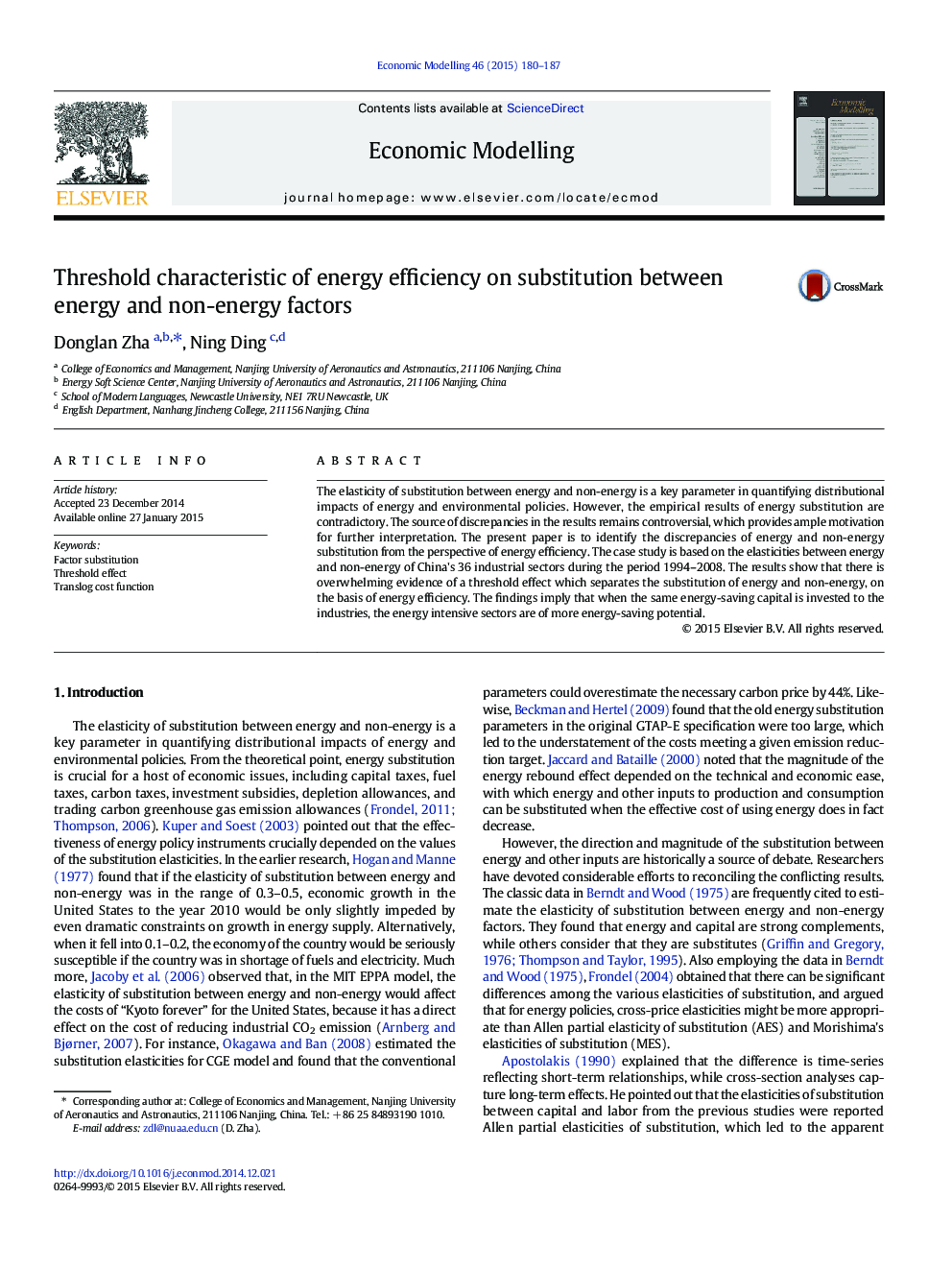| Article ID | Journal | Published Year | Pages | File Type |
|---|---|---|---|---|
| 5053780 | Economic Modelling | 2015 | 8 Pages |
Abstract
The elasticity of substitution between energy and non-energy is a key parameter in quantifying distributional impacts of energy and environmental policies. However, the empirical results of energy substitution are contradictory. The source of discrepancies in the results remains controversial, which provides ample motivation for further interpretation. The present paper is to identify the discrepancies of energy and non-energy substitution from the perspective of energy efficiency. The case study is based on the elasticities between energy and non-energy of China's 36 industrial sectors during the period 1994-2008. The results show that there is overwhelming evidence of a threshold effect which separates the substitution of energy and non-energy, on the basis of energy efficiency. The findings imply that when the same energy-saving capital is invested to the industries, the energy intensive sectors are of more energy-saving potential.
Related Topics
Social Sciences and Humanities
Economics, Econometrics and Finance
Economics and Econometrics
Authors
Donglan Zha, Ning Ding,
